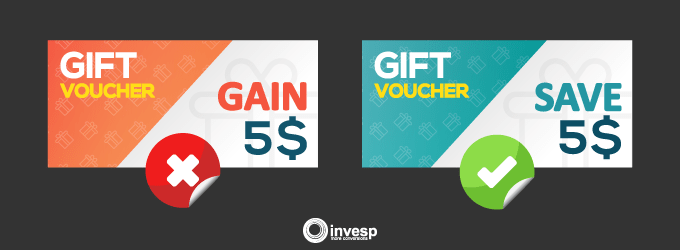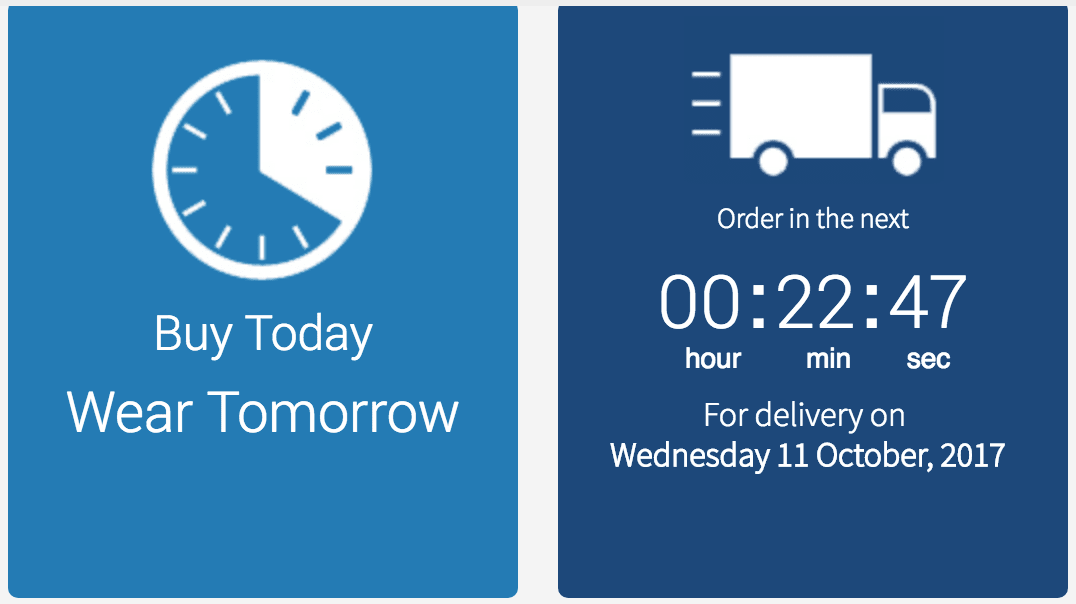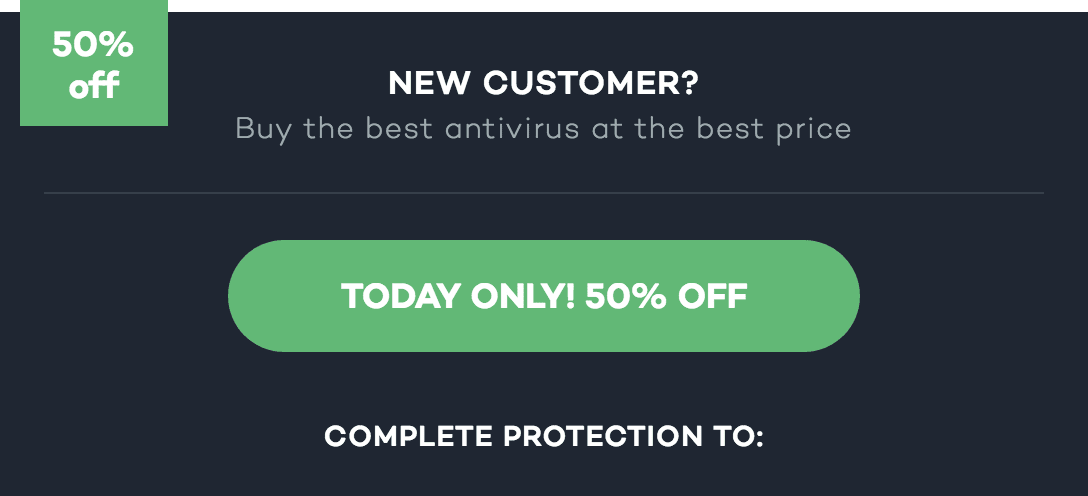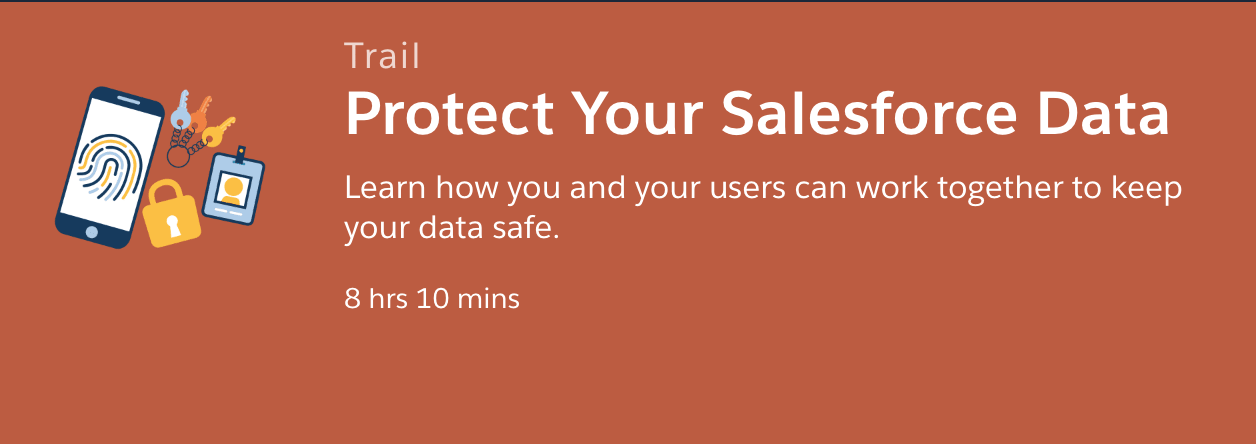Loss aversion is the theory that we fear loss considerably more than we desire to gain something. More specifically, it says the psychological pain of losing something is roughly twice as intense as the pleasure of gaining something of the same value.
In other words, losing £20 hurts us a lot more than gaining £20 will please us.
This means we’re psychologically geared to react in situations where we have something to lose more than we are when there’s something to gain. And this is one of the most powerful logical fallacies marketers use to sell products.
Here are seven ways you can use loss aversion to boost your own conversion rates.
#1: Free trials and samples
Offering a free trial or samples of your product may seem like a trivial matter but there’s a lot of psychology going on here. First of all, research shows us that we assign a higher value to items that we own than items we don’t. Once users are signed up for your free trial, they feel like an owner and they start attributing value to it.
More importantly, once users get used to the full version of your product and its premium features, it’s difficult to let them go. Loss aversion literally leaves them itching to sign up to the full paid version of your platform rather than lose out on the features they’ve already enjoyed for the last 30 days.
#2: Coupons
Source: Invespcro.com
As Khalid Saleh points out in this article for Invespcro.com, coupons are a classic loss aversion tactic that still works in the digital age.
Coupons trigger loss aversion far more aggressively than a regular sales promotion. Why? Because a coupon is something consumers easily gain; it’s something they can comprehend owning – and it’s something they can imagine losing.
Once you put a time limit on that thing, it’s not a saving they’ve gained. It’s a saving they’re about to lose unless they act quickly.
#3: Scarcity and urgency

Last week, we ran an article looking at 19 ways you can add urgency to your landing pages. One of the tactics we covered was scarcity, which prompts users to take action rather than risk missing out altogether.
Essentially, scarcity and urgency tactics play on the fear of losing the opportunity to buy. When there are thousands of products left in stock, we know we can buy them when we want. When an item is sold out, we kick ourselves for not taking action sooner.
#4: Buy now, get it tomorrow
Glasses Now makes a big deal out of its “Buy Today Wear Tomorrow” service. It features a countdown on the home page and one in a sticky header that’s always in view as users scroll down the page and navigate its site.
This countdown timer is telling users that these glasses are as good as theirs, as long as they click the buy button before the counter reaches zero.
#5: “Buy now and get…”
If you promise consumers they’ll get something extra if they buy today, then they’ll instantly feel like they’re missing out on something if they buy at a later date. This is particularly effective for users who are close to buying but need that extra push over the finishing line.
For example, people who don’t automatically sign up for the paid version of your software, once the free trial has ended, might take the final step with an added incentive.
#6: Protect people from loss
Most loss aversion tactics give users some kind of discount on the product you want to sell them. It’s the fear of missing out on that offer that triggers loss aversion in these cases. However, some products are designed to protect consumers from losing something else they already own.
People want to protect their data, health, consumer tech gear, homes, loved ones, and all kinds of things they consider to be important in their lives. If your product or service can protect people from losing these important aspects of their lives, you don’t need coupons or special offers to trigger loss aversion.
This approach has certainly worked for insurance firms over the last few centuries.
#7: Use loss aversion to encourage form completions
The reason progress bars work so effectively on multi-step forms is that they trigger loss aversion. By creating the illusion of progress as users complete more of your form, the more resistant users become to the idea of not fully completing it.
The notion of losing that perceived progress makes it difficult to give up when they might otherwise be tempted to. This happens because of something called the endowed progress effect.
Researchers Joseph C. Nunes and Xavier Dreze put this theory to the test with loyalty cards for car washes. Much like those cards you get from coffee shops, participants got a free carwash after collecting eight stamps. Except they handed out two different types of cards to participants. One had eight blank spaces requiring stamps while the other had ten spaces with two already stamped.
After nine months, 34% of the people with 2 free stamps had redeemed their cards versus 19% percent who had cards without stamps
The illusion of loss
In marketing, loss aversion tactics create the illusion of giving potential buyers something of value – something they can comprehend losing. Of course, you’re not really giving them anything at all. You’re giving them the concept of a coupon or a discount for a limited period of time and threatening to take it away. As soon as you create that sense of missing out on something, loss aversion is triggered.
The biggest brands all make good use of loss aversion to boost conversions and most users will be none the wiser.
So instead of offering users £20 credit for signing up to a VIP account, give them the £20 VIP credit to begin with. And then ask them to sign up for a VIP account in order to keep hold of their free credit.








